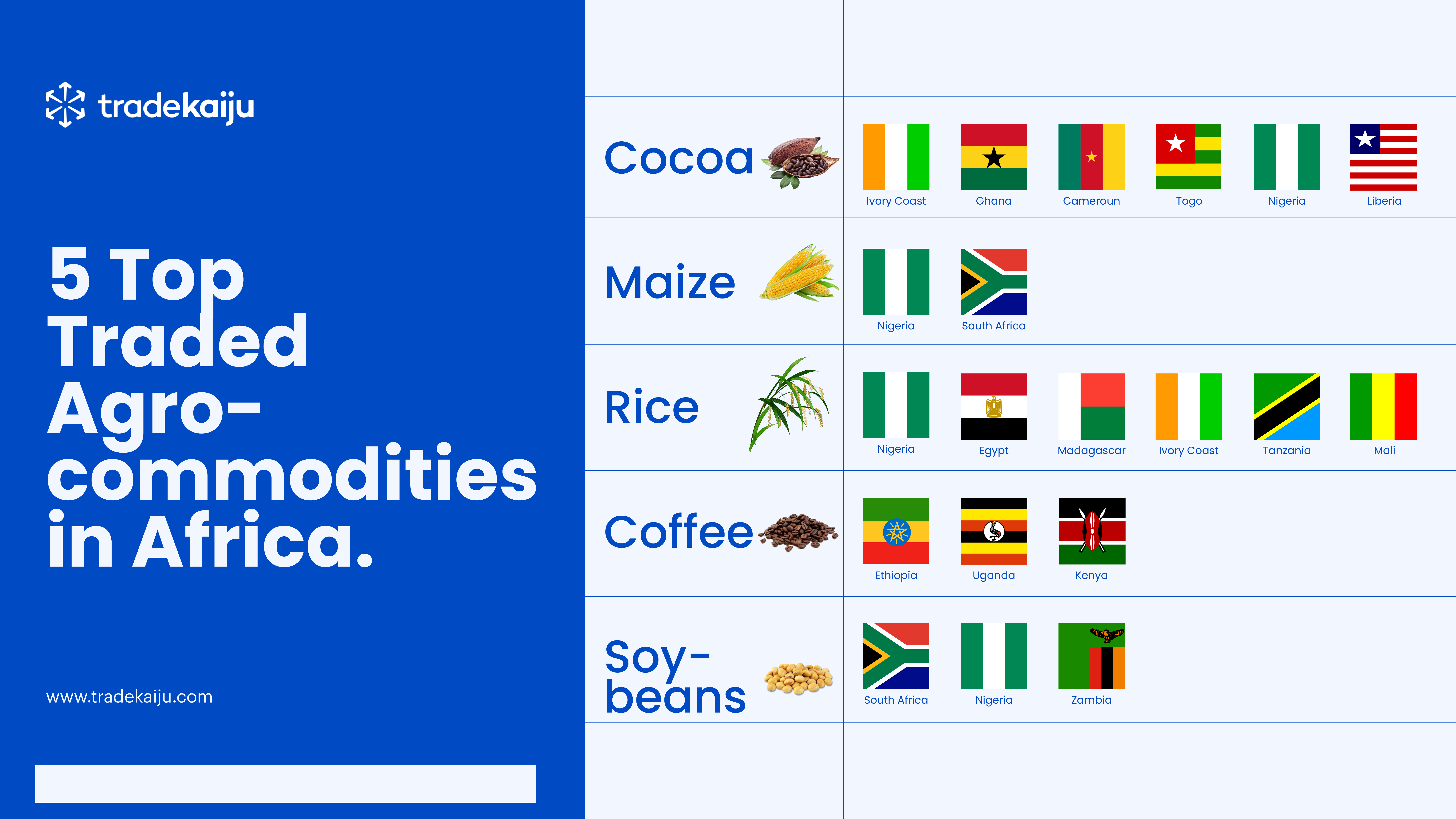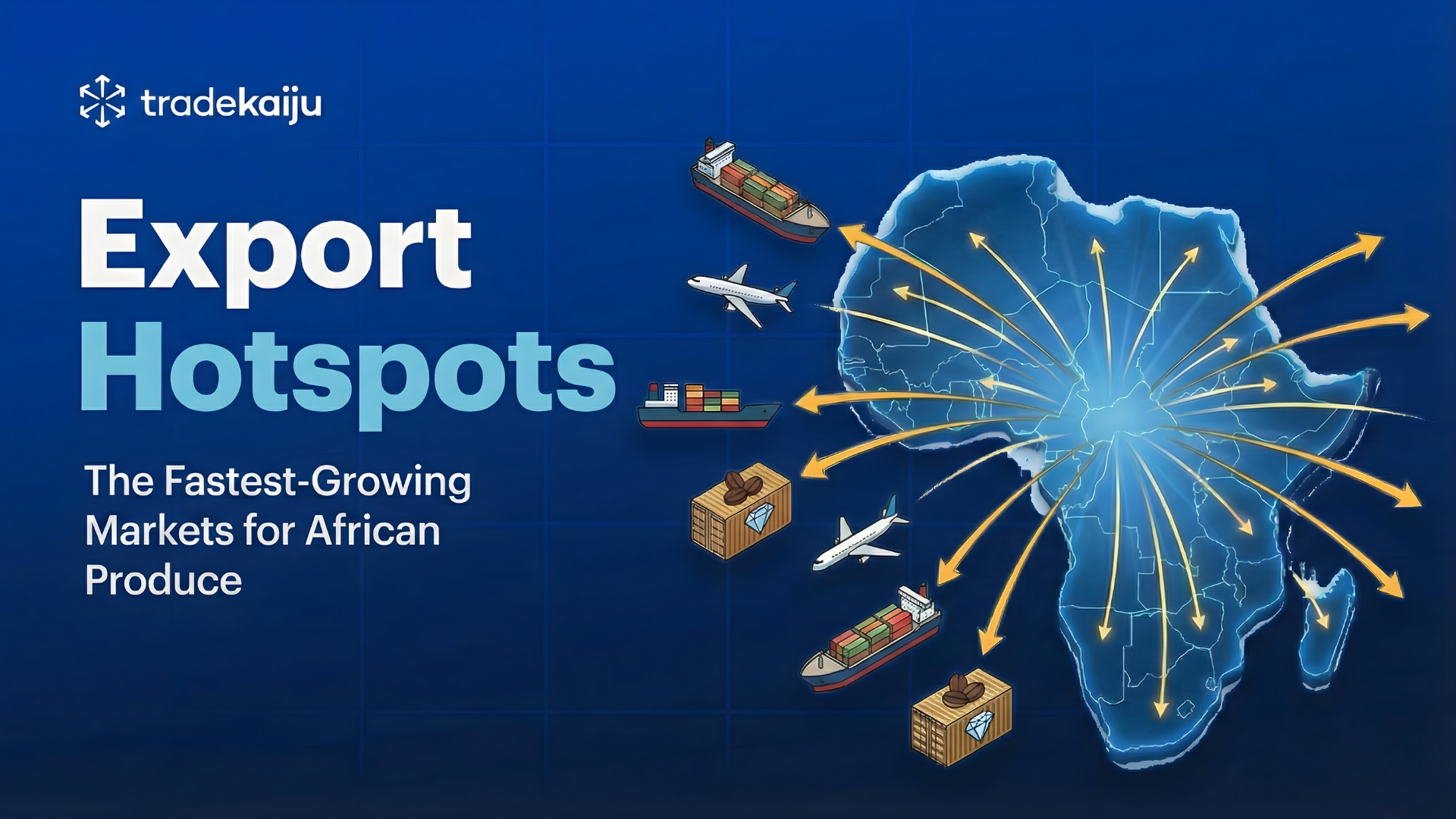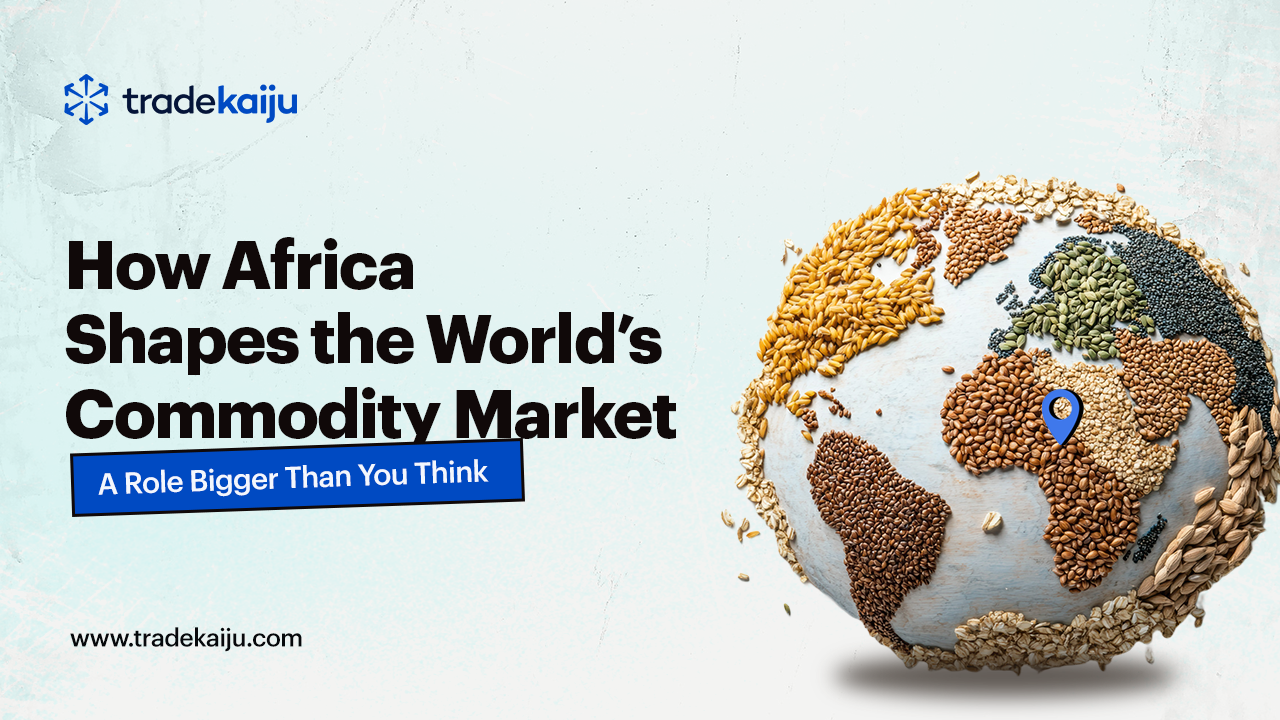The Top 5 Traded Agro Commodities Within Africa Based on Consumer Preferences
Date Posted: 2024-01-21 21:53:36

Africa, the second world’s largest continent is not just rich in natural resources but contributes to 75% of the global commodity market. Her involvement in the global commodity market has formed international trade and improved market access and efficiency.
Despite how complex commodity trade seems, the advancement of technology has made commodity trading look like an easy-peasy activity. Empowering individuals to trade and buy commodities from the comfort of their homes via mobile phones. In this article, we will explore the definition of agro commodities and the five top-traded commodities in Africa based on consumer preferences. Let’s delve right into it.
Characteristics of agro commodities
According to Visual Capitalist, China, UAE, and India have had a 1% share of Africa’s total export value since 2010. This research projects how naturally endowed Africa is. Agro-commodities obtained from Africa include maize, Rice, Millet and Sorghum, Soybeans, Pulses, Groundnuts, Plaintains and bananas, Mangoes, etc.
Generally, agro commodities have the following characteristics:
Standardization: Agro-commodities are pretty much interchangeable with one another. Take, for instance, one ton of wheat is similar to another ton of wheat in terms of quality and specifications.
This standardization makes commodity trading easy because buyers and sellers can rely on consistent quality, allowing smooth market transactions.
Bulk trading: Agro-commodities are usually bought and sold in large quantities, often in tons or entire shiploads, due to bulk productions and need to be transported efficiently.
Bulk trading is more practical for producers and buyers, ensuring that large-scale agricultural products can move from where they are grown to where they are needed.
Price fluctuations: The prices of agro-commodities can go up and down quite a bit. This is influenced by factors like weather conditions affecting crops, changes in supply and demand, and even government policies impacting agriculture.
It means that the cost of agro-commodities can change, affecting everyone from farmers to consumers. It adds an element of risk and opportunity for those trading these commodities.
The Top 5 Traded Agro Commodities in Africa
Africa contributes significantly to the global commodity market via trading agro commodities. The top 5 traded agro commodities based on consumer preferences are:
1. Cocoa
Cocoa is Africa’s top traded agricultural commodities accounting for roughly 75% of global cocoa production. Its undisputed leaders are Ivory Coast and Ghana. They alone contribute to 50% of the world’s cocoa production. Other important producers of cocoa are Cameroun, Togo, Nigeria and Liberia.
The need for cocoa products such as chocolates has increased, subsequently impacting consumer preferences. Beyond chocolate, cocoa bean products are cocoa butter(cosmetics), medicines, beverages, fertilizers, etc.
2. Maize
Maize, commonly known as corn, stands out as the most widely produced grain globally. The major contributors to global maize production include Indonesia, India, Mexico, Nigeria, and South Africa. These countries employ diverse production methods and scales, ranging from large-scale mechanized farms in the US to smaller family-run farms in Africa.
Maize exhibits remarkable versatility, finding application in various sectors:
a. Food: Maize serves as a staple in direct consumption, featuring freshly cooked corn, boiled or roasted ears, polenta, grits, porridge, tortillas, and arepas. It is also a key ingredient in milling products such as corn flour, semolina (for pasta), cornmeal, and masa harina (for tortillas).
b. Animal Feed: Dried maize kernels or silage find application in poultry, livestock, and fish feed. Distiller's dried grains, a byproduct of ethanol production from maize, also hold significant value as animal feed.
c. Industrial Uses: Maize plays a crucial role in the production of biofuels, particularly ethanol derived from corn starch, serving as a notable alternative fuel source. The starch extracted from maize is employed in diverse industrial applications, including adhesives, textiles, pharmaceuticals, and paper production.
d. Other Uses: The versatility of maize extends to bioplastics, contributing to the production of biodegradable plastics made from corn starch. It is also utilized in building materials such as insulation panels, adhesives, and binders.
3. Rice
Africa is increasingly becoming a significant contributor to global rice production, with key players including Nigeria, Egypt, Madagascar, Ivory Coast, and Tanzania. Nigeria leads as the top producer, contributing 8.3 million metric tons in 2023, although it still imports to meet domestic demand. Other notable rice producers in Africa include Mali, Guinea, Senegal, Sierra Leone, Liberia, Ghana, and Ethiopia.
The continent faces challenges in rice production, such as limited irrigation, dependence on rainfed agriculture, and vulnerabilities to pests and diseases. Despite these challenges, initiatives focused on improving technology, infrastructure, and resource accessibility are fostering growth in rice production across Africa.
Rice in Africa is primarily a staple food, consumed in various forms with diverse accompaniments. Additionally, it serves as a raw material for various products:
Rice Flour
Rice Noodles and Vermicelli
Rice Wine
Rice Vinegar
Rice Bran Oil
Rice Straw
Understanding the diverse producers and uses of rice in Africa underscores its critical role in ensuring food security, fostering economic development, and showcasing the potential for further innovation in various industries.
4. Coffee
Coffee holds significant importance as an agricultural commodity in Africa, with Ethiopia, Uganda, and Kenya emerging as important contributors to the global coffee market. Renowned for its unique flavours and high quality, African coffee is in high demand worldwide.
Ethiopia, often referred to as the birthplace of coffee, stands out as the largest coffee producer on the continent. The country boasts a rich diversity of coffee varieties, including Sidamo, Yirgacheffe, and Harar, each celebrated for its distinct and exceptional flavours. Ethiopia's coffee production has garnered global recognition and remains a key player in shaping the industry.
Uganda and Kenya also play substantial roles in the global coffee market, exporting both Arabica and Robusta beans. These countries benefit from favourable climate conditions conducive to coffee cultivation and boast a longstanding history of coffee production. The combination of these factors contributes to the high quality and sought-after nature of African coffee on the international stage.
5. Soybeans
Soybean production in Africa is led by key players, with South Africa, Nigeria, and Zambia at the forefront. South Africa, contributing 35% of the continent's output, dominates production in provinces like Mpumalanga, Free State, and North West. Nigeria, the largest sub-Saharan producer, follows with around 27%, primarily in the north and central regions. Zambia, a major commercial producer, accounts for 8%, concentrated in Eastern and Copperbelt provinces.
While commercial soybean production exists, many small-scale farmers cultivate soybeans alongside other crops like corn, sorghum, or cassava.
Research explores soybean residues for biomass energy, and how their nitrogen-fixing properties contribute to soil health. The multifaceted uses of soybeans highlight their significance in food security, economic development, and sustainable practices in Africa.
In summary, Africa's role in the global commodity market is substantial, driven by the top 5 traded agro commodities—cocoa, maize, rice, coffee, and soybeans. These commodities not only reflect consumer preferences but play crucial roles in various industries, contributing to economic development, food security, and sustainable practices on the continent.
Similar Blog Posts

Africa’s agricultural sector is on the rise, and so is global demand for its produce. As the continent continues to bu

Africa isn’t just a participant in the global commodity market, it’s a driver. The continent holds: 30% of the worl

Cashew is one of Africa’s most valuable export crops, yet many people (especially new traders) don’t fully understan